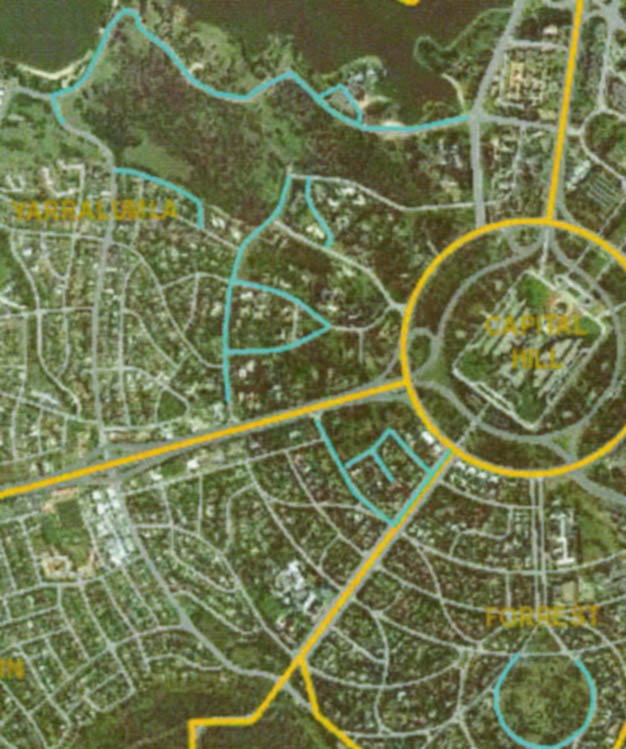On 20th March DRA President Peter Wurfel and Secretary Richard Thwaites had a meeting with the new CEO of the National Capital Authority, Malcolm Snow. Mr Snow has been making a point of meeting with residents representative groups across Canberra as part of his familiarisation.
Mr Snow has a personal professional connection with Deakin. As a young town planner with ACTPLA he was responsible for the planning of the West Deakin National Institution precinct, between Kent Street and the Mint area.
DRA reps noted that direct NCA responsibility may only apply to specific areas of Deakin such as Adelaide Avenue, The Lodge, and State Circle. However we found that Mr Snow was receptive to our concerns about the effect on Deakin of developments in National areas including the Parliamentary Triangle. Topics we raised, with Mr Snow’s response, are:
General population growth of Canberra, including potentially large numbers at Molonglo, Yarralumla Brickworks and urban intensification, placing more pressure on Deakin traffic and facilities
Streets (Grey Street, Gawler Crescent, Hopetoun Circuit, Macgregor Street, Stonehaven Crescent, Strickland Crescent and Kent Street) because of increasing levels of commuter traffic (employees, shoppers, students) accessing the Parliamentary Triangle, Manuka, etc.
- Malcolm Snow agreed that the respective roles of the NCA and the ACT Government would benefit from greater clarification, and he hoped to ensure better coordination between the two authorities so that resident issues were not overlooked. He agreed that a better balance between public transport and private vehicle dependence was needed to go along with densification of inner suburbs.
Intensification and paid parking in the Parliamentary Triangle. DRA raised the impact on surrounding suburbs of paid parking and increased building over previously-available parking sites in the Triangle.
- Mr Snow recognised the issue and indicated he was already seeking ways to improve public transport for workplaces within the Triangle, including perhaps a Civic-Manuka shuttle service. Public/private partnerships might offer some opportunities to provide services co-located with pay parking, to reduce need for daytime car access. Enforcement issues are outside NCA control, however.
Adelaide Avenue is a “Main Avenue”, covered by a Development Control Plan (DCP), but recent developments appear to be inconsistent with the DCP, and our experience is that NCA has been silent on ACTPLA/NCA consultation with respect to adherence to the DCP.
There are major emerging issues include proposed bus stops (for access to faster, more efficient public transport) and the inevitable growth of Canberra and the Parliamentary Triangle.
- Mr Snow recognised that the Adelaide Avenue DCP and the current state of developments on that corridor are less than optimal, and would hope to achieve better coordination in future.
Diplomatic estates. What is the future of diplomatic leases currently in Canberra, with the Parliamentary enquiry now finalised?
- Mr Snow expects that a comprehensive policy will be developed with respect to location of future embassies before the end of this year, taking into consideration the outcomes of the recent Parliamentary enquiry.
National Heritage Listing for all of Canberra and potential relevance to Deakin.
- Mr Snow was unaware of the proposal for National Heritage Listing for Canberra, and we offered to provide him with a website link to this. We noted that it was especially important to link this in with our own suburb precinct codes.


